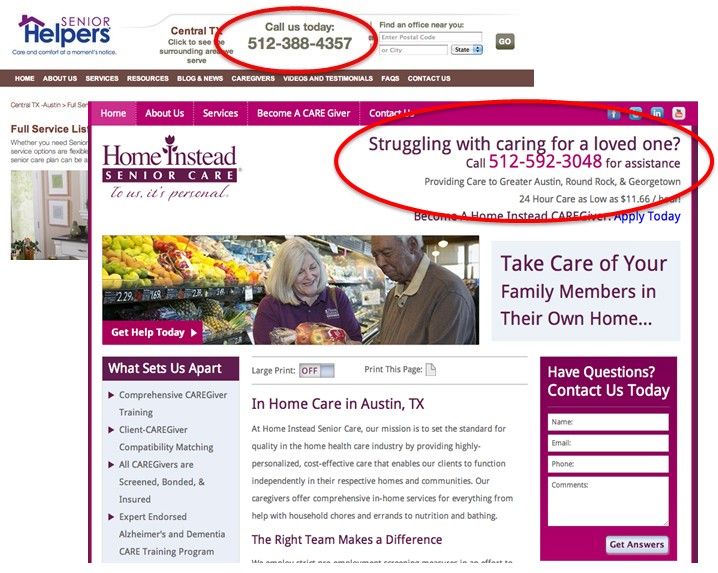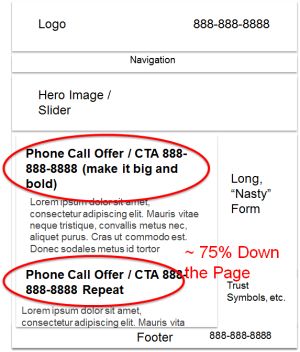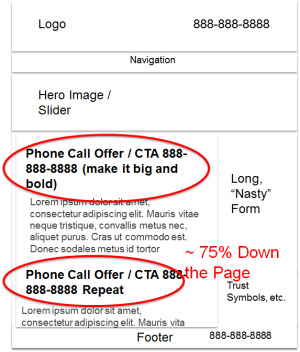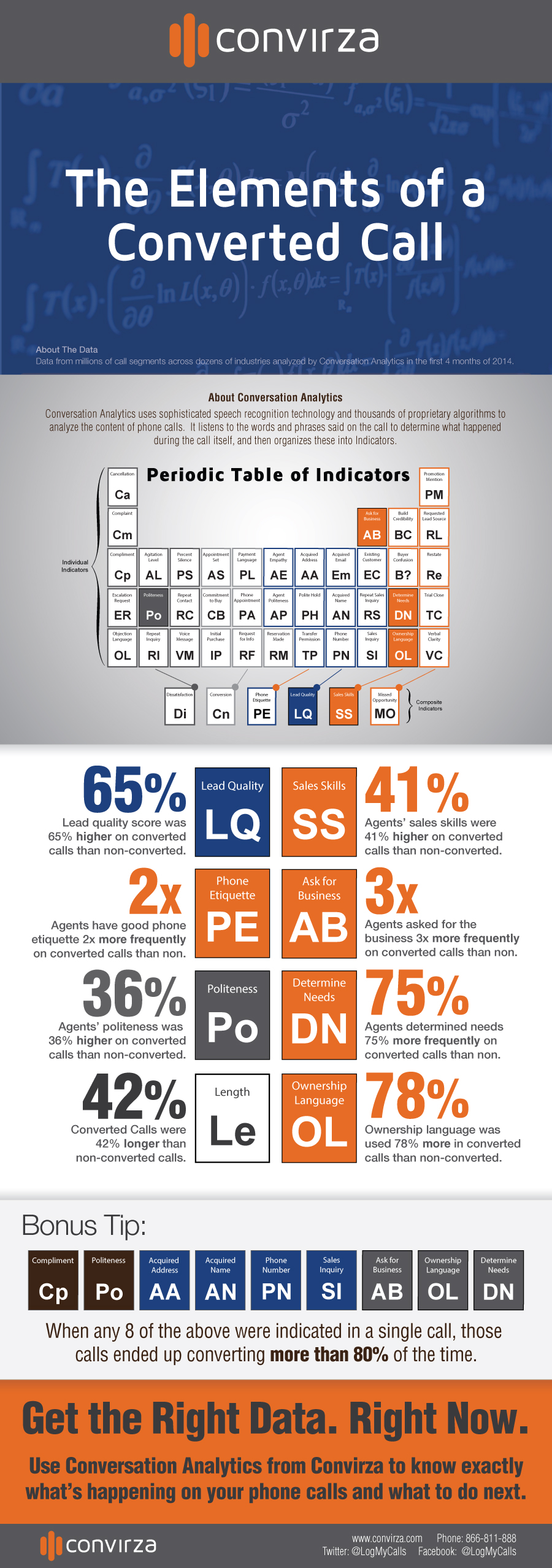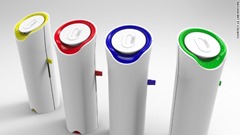Phone lead generation is still a highly effective way to reach prospects. Give these 8 advanced tactics for increasing your B2B telephone leads, sales and outbound ROI a try.
Telephone sales aren’t what they used to be. It took only 3.68 cold call attempts to reach a prospect in 2007. Today, it takes around 8 attempts, more than doubling the difficulty of landing sales over the phone.
But as you know, phone sales certainly aren’t dead. They just require a higher level of strategy and mastery. A study by Baylor University found that it takes roughly 7.5 hours to secure one referral or appointment through cold calling methods. If you only have one dedicated phone salesperson, your company could have one new appointment or referral every day via cold calling.
For most B2B businesses, where phone selling strategies are most commonly found, one lead per day per salesperson represents a very strong ROI.
Today, we’re going to help you sell over the phone like a modern pro.
Here are 8 Advanced Tactics for Increasing your B2B Telephone Sales
1. Take Timing Seriously
In sales, as in many areas of life, timing is everything. You will often accomplish more during peak hours than you do the rest of the day. So even if you are in a position that requires around-the-clock calls, it’s important to be at peak efficiency during those peak hours.
So when are those peak hours?
An in-depth study out of MIT gives us several interesting insights:
- The best time period to contact leads is between 4:00-6:00 p.m.
- The best second best time period is between 8:00-10:00 a.m.
- The worst time period to call is between 11:00 a.m.-2:00 p.m.
- The best days to call are Thursday and Wednesday.
- The worst days to call are Tuesday and Monday.
It’s worth checking out the study, because these aren’t insignificant differences. For example, calling on Thursday versus Tuesday increases results by an average of 50%. Calling at 4:30 p.m. versus 11:30 a.m. increases results by an average of 114%!
Timing might seem cliche, but what other tactics do you know of that can immediately double sales?
2. Call The Right People and Present them with the Right Pitch
I’m going to borrow and re-spin an example from Jason Quey.
Sid works at a large SaaS company. When it comes to larger tool purchases, he makes the decisions. However, Sid rarely creates content for the team. Tyler is in charge of content.
If your sales team is attempting to pitch a solution to the content problems Tyler is facing, appealing to Sid around those challenges won’t be effective. The best way to pitch Sid is very different from the optimal way to pitch Tyler.
The Gartner Group reports that in a company of 100-700 people, an average of 7 people are involved in buying decisions. If you aren’t tailoring your pitch around these people, you will struggle to succeed in B2B phone sales. There’s no getting around that.
3. Lay The Groundwork
We know that cold calls can work, but there’s a way to make them work better. UNC professor Dave Roberts said it best, “Cold calling is old fashioned… Aim for hot calling.” The more prepared you are when you call, the better that call will generally go.
We live in an age of the internet and social media. Before you call a prospect, Google them. Learn everything that you can before ever making the call. This can help you know what the customer’s needs are, what their objections might be, and what interests them. You may happen upon what their biggest pain is right now.
You can even make some level of initial contact before calling:
- Connect via shared acquaintances
- Comment on their social posts
- Mention them in a blog post or comment
- Etc.
There are many ways to make a superficial connection with someone that quickly turns you into a known entity versus a cold call.
4. Follow A Sales Script
There are no downsides to using a sales script… only to using one poorly.
When used correctly, having a sales script results in the following benefits:
- They force you to create and refine a consistent sales methodology.
- They allow you to provide a baseline for your entire sales team’s performance.
- They allow sales reps to spend less time thinking about what they’re going to say and more time listening to the potential customer.
- They provide talented sales reps with a strategic baseline off of which they can improvise.
To learn how to create your own sales script, check out this guide from Close.io.
5. Navigate Objections
Navigating objections is a central part of any sales process, but there can be a bit of a misunderstanding about this issue.
Some objections always need to be covered and getting out in front of them can be beneficial. For example, if your product is twice as expensive as every other competitor, it’s almost guaranteed that issue is going to come up, and addressing it before the customer does gives you the chance to frame it in a positive light.
Not all objections are created equal, however, and sometimes, bringing up certain objections simply bogs down the sales process and creates doubts that weren’t there to begin with. Instead, have a plan to overcome these objections IF they are brought up.
For more on covering objections, here’s another top notch guide from Close.io.
6. Stop Talking. Ask and Listen.
Listen. Listen. Listen.
The more your prospect is talking, the better your chance of closing the sale.
Outbound sales and inbound sales follow up are an inherently aggressive activity. You are on the offensive. You are seeking out people to sell them something. But often, the solution is simply to slow down and get out of your own way.
The best sales scripts and salespeople are focused on asking the right questions. The prospect doesn’t need you to create challenges for them. They have numerous pitfalls and problems on the path to their goals. Your job is to create a situation where the prospect is articulating those challenges… not you.
Ultimately, B2B sales isn’t about tricking people into getting a product or service that doesn’t work for them. It’s about matching beneficial solutions to the businesses that need them, and that requires a two-way conversation.
Don’t miss out on How to Pick a Conversion Optimization Consultant for your Online Business
7. Focus On Customer Value
Your goal as a salesperson is never to sell someone on a price. Your goal is to sell them on value – such incredible value that the price seems like a no-brainer.
It’s very, very important that you focus on this value BEFORE discussing pricing, for a number of key reasons.
First, if pricing is brought up first, your product/service will be evaluated as a commodity. Once a number has been mentioned, everything will be filtered through that number. You will have zero leverage in presenting your value.
Second, if you don’t pitch you value before getting to pricing, the prospect will consider the pricing based on their preconceived assumptions about the value of your product class. And remember, they aren’t currently using your product, so it’s likely they don’t consider the value to be worth the cost.
Finally, if you don’t understand the prospect’s needs before you get to pricing, you might propose a price that is too low or too high. Too high, and the conversation is essentially over. Too low, and you won’t be considered a serious player. Without getting to know the prospect first, you are playing a dangerous guessing game.
8. To Close Is To Follow-Up
You already probably know your “hook, line, and sinker.” You have your closing speech down to a science. That’s great, but just know that you will talk to a person several times before they’re ready to hear your golden pitch. According to Marketing Donut, 80% of sales require 5 (yes, FIVE) follow up calls. 44% of salespeople quit after just 1 follow up. Don’t be a quitter!
Also, stop leaving the follow-up in the customers’ hands. Don’t say, “Give me a call if you’re interested.” Geoffrey James, author at Inc. said, “I’ve read dozens of so-called sales letters and sales emails that end with a suggestion that the customer should call or contact the seller…The people who send these letters always complain that they don’t get any responses. No kidding–you’re asking the customer to do your work for you.”
Instead, change your follow-up strategy and set up a time to talk again. For instance, “I’m going to call you next Wednesday, after you’ve had time to look at everything, so that we can discuss whether it makes sense to continue discussing our offer.”
Conclusion: Upgrade Your Phone Game
Telephone sales are more challenging than ever, but they are worth the trouble. Use these 8 advanced tactics to improve your B2B sales calls and close more sales.
Do you need help increasing the number of inbound leads? Would you like your phones to ring more often? Find out how Conversion Sciences can help with results-driven lead generation solutions.

Rachel Africh
Contributor: Rachel Africh is the CMO of TheLeadsWarehouse.com and is an expert on marketing tactics and generating targeted leads that convert for sales industry professionals.

